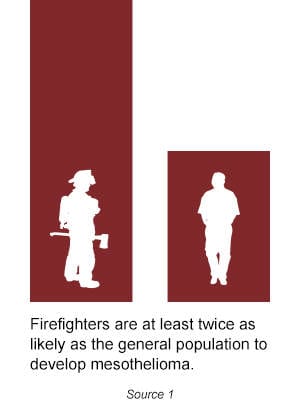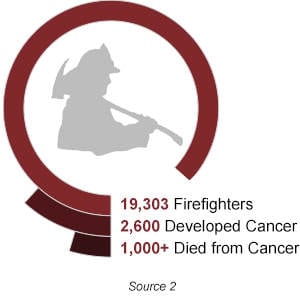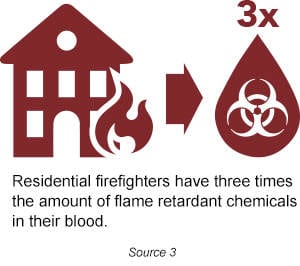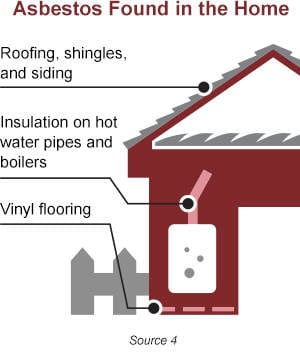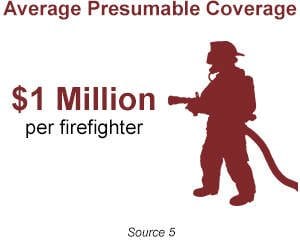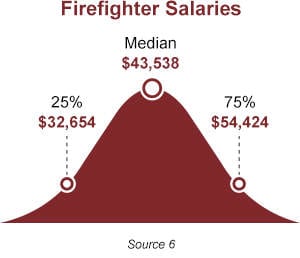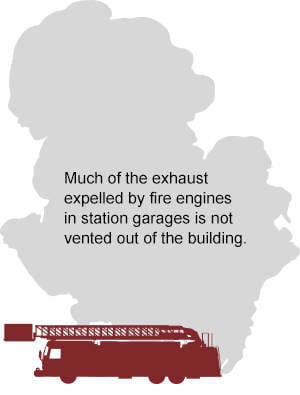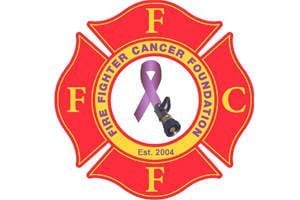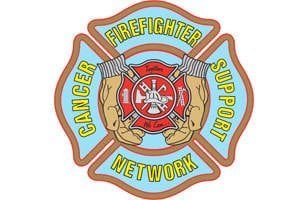Captain Maria Silva of the Pasco County Fire Department in central Florida spent 15 years rushing into burning buildings and scrambling through cramped, smoke-filled rooms. She made a career out of saving lives. Unlike the heroes of comic books and movies however, Silva’s story didn’t have a happy ending. Silva, a single mother, developed thyroid cancer and what’s worse, her disease was likely caused by years of breathing in the toxic fumes that were part of her daily work. Though she sacrificed her health for the safety of others, Silva’s home state of Florida doesn’t offer worker’s compensation to firefighters who develop cancer.
Silva’s isn’t an isolated case. In Fairburn, Georgia, 36 year-old Jason Trotter developed Hodgkin's lymphoma despite being a youthful, non-smoking gym rat. Trotter, unlike many firefighters, believes he knows the source of his illness – it was a meth lab explosion that he'd helped extinguish a year before developing cancer.
In South Florida, veteran Fort Myers firefighter Anthony LaBruzzo spent his free time hitting the weight room and eating like an athlete only to succumb to throat cancer at age 50. When he died, he left behind a wife and a suddenly empty home, haunted by memories.
Modern Fires are More Toxic than Ever Before
Unfortunately, it makes all too much sense that firefighters are dying. Modern homes are filled with synthetic fibers, flame-retardants, and plastics. 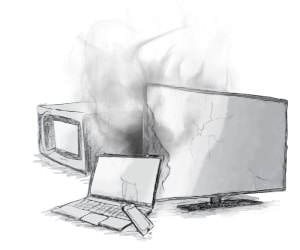 The average home has a greater number of electronics than ever before, and inside of these devices—our computers and TVs and phones and microwaves—are a host of acids and compounds that burn extremely hot, releasing toxic gases into the air. Smart phone batteries, for example, are made with lithium ion and then sprayed with flame retardant. When these batteries catch fire the lithium burns hot, but the flame retardant makes the battery smoke instead of explode. The combination of extreme heat and flame-resistant chemicals turns many house fires into a fog of poison.
The average home has a greater number of electronics than ever before, and inside of these devices—our computers and TVs and phones and microwaves—are a host of acids and compounds that burn extremely hot, releasing toxic gases into the air. Smart phone batteries, for example, are made with lithium ion and then sprayed with flame retardant. When these batteries catch fire the lithium burns hot, but the flame retardant makes the battery smoke instead of explode. The combination of extreme heat and flame-resistant chemicals turns many house fires into a fog of poison.
A recent article in The Atlantic explains that "synthetic materials create hundreds of times more smoke than organic ones; flame retardants alone double the amount of smoke and increase toxic gasses 10-fold." For veteran firefighters, this information comes as no surprise. Sokolove recently spoke with a Pasco County firefighter/EMT named Jim, who wished to keep his last name anonymous.
Jim mentioned that it’s now a common occurrence for first responders to be greeted with an explosion when attempting to open a door or window.
A blood sample study revealed that residential firefighters had three times the average amount of flame retardant chemicals and over twice the normal level of perfluorinated substances, (which are used to make the “non-stick” coating on frying pans for example) in their blood stream.
The Worst Dangers for Firefighters Hide in the Smoke
The dangers don’t end when the flames die down, however, and forgetting this fact puts some firefighters at even greater risk. “Once you put the fire out, you’ve got to do clean up,” Jim explained, “A lot of firefighters, especially the younger ones, forget and take their masks off.” What many don’t realize is that smoke, and the harmful particles it holds is every bit as dangerous as the fire itself.
One hazard lurking in the smoke is asbestos, a naturally occurring mineral. Many old commercial structures and homes have been built with asbestos-containing products that are used as insulation in pipes and rafters. Asbestos also wraps old boilers and lingers in outdated ceiling tiles. When these buildings catch fire and the walls and ceilings begin to cave, asbestos gets disrupted and sent into the air.
This happened in Everett, Washington when 12 firefighters learned they were conducting training exercises in an asbestos-filled building. Fortunately, the city and fire department reached a settlement and the firefighters secured lifetime medical monitoring. Similar cases have occurred throughout the country and not all firefighters are so lucky.
The health issue is so common that 34 states have created cancer presumptive laws that assume cancers suffered by firefighters are work-related. With the law in place, firefighters can receive worker’s compensation while they fight cancer and recover. Without these laws, people like Maria Silva are forced into an almost impossible scenario: they must stay at home, off duty and without a paycheck, while footing huge medical bills for their recovery. It is a devastating and unfair fate for a group of people who routinely sacrifice themselves for others.
States Without Cancer Presumption Laws
- Arkansas
Delaware
Florida
Georgia - Hawaii
Idaho
Kentucky
Mississippi - Montana
New Jersey
North Carolina
Ohio - South Carolina
Utah
West Virginia
Wisconsin
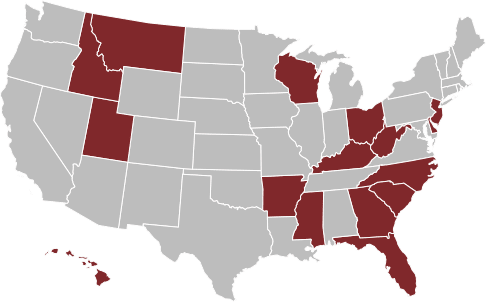
States Won’t Spend Money on Worker’s Compensation
So why don't all states offer protection to firefighters? The answer is about as simple as it is cold and efficient: cost.
In an article for Business Insurance, director of member programs for the National League of Cities (NLC), Cathy Spain described presumptive laws as a "huge cost factor" and explained that moving health care issues into the worker’s compensation domain could create confusion and unexpected costs. “Additionally,” Spain added, “you have the indemnity that might be paid as a result of it being in the worker’s comp system." In short, many worker’s compensation insurers get nervous when they hear talk of expanded benefits, especially when those benefits are for long-lasting and expensive diseases like cancer.
In the same article, Ron Thomas who manages the Connecticut Conference of Municipalities (CCM), an association of 150 Connecticut towns, put it more bluntly: 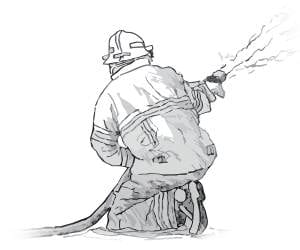 "We think it's bad public policy to give a certain class of employees special benefits when there's not any conclusive medical evidence to support it." Echoing these statements, another municipal representative, Ray Sibley, said that presumptive coverage averages about $1 Million in cost per firefighter. "While I was in Washoe [County, Nevada], we had 5 or 6 heart attacks and if I recall, the potential value for each averaged about $1 Million.”
"We think it's bad public policy to give a certain class of employees special benefits when there's not any conclusive medical evidence to support it." Echoing these statements, another municipal representative, Ray Sibley, said that presumptive coverage averages about $1 Million in cost per firefighter. "While I was in Washoe [County, Nevada], we had 5 or 6 heart attacks and if I recall, the potential value for each averaged about $1 Million.”
The counterargument is that firefighters are human beings and not just assets to be used and discarded. “I’ve seen a couple friends of mine get cancer,” Jim of Pasco County said, “and once you get cancer they forget about you.” State legislators are too often fixated on the bottom line — revenues for their projects and election campaigns. In their struggle to keep the books balanced, these officials overlook the widespread suffering of skilled laborers and rescue professionals.
Firefighters, first responders, and industrial workers (all groups who are at a greater risk for particularly debilitating cancers like mesothelioma) perform duties that the general population is often hesitant to do. Firefighters especially are asked to risk their lives on a regular basis for little pay and poor benefits. “People think because you have the title ‘firefighter’ you make a lot of money,” Jim of Pasco County said, “but I’ll be honest, I only make $40,000 a year.” Brave and skilled professionals who are willing to carry strangers out of a burning building are not expendable by any stretch of the imagination.
State Budgets Are Spread Thin
While it’s nice to think that compassion and appreciation are enough to win support for the men and women in uniform, this just isn’t the case. Michigan is a prime example. In January of 2015 the state passed a cancer presumption law, but lacked the money to pay for it. Governor Rick Snyder expressed his direct support, “given the dangerous work our firefighters do I think a workplace cancer presumption is reasonable.” Yet, despite these good intentions, officials had too many other projects to fund. Road funding has been an ongoing battle in Michigan and tax credits offered to companies increased dramatically, changing the budgetary landscape dramatically. The result? Michigan was sapped of any “leftover” money.
Next to basic infrastructure and economic stability, the pleas of firefighters struggle to reach sympathetic ears. The result is that even when helpful, forward-thinking laws are passed, the resources simply aren't there to lend them any staying power.
Scientists Struggle To Study Smoke Exposure
In order to even consider paying for such laws, state and city officials demand proof that smoke and toxin exposure causes cancer. They don’t want trends or correlations, but a simple, yes-or-no answer. In states without cancer presumption laws, fire and rescue workers can only get additional support if they provide evidence that a specific fire caused their illness. Unfortunately, this is impossible in many cases.
The CDC report written by Robert Daniels and ten other scientists points out that cancer studies thus far have been inadequate,
Daniels goes on to explain that while the studies haven’t been consistent, the broader issue of cancer is still a very real threat, "In particular, it is widely accepted that firefighters are potentially exposed to a number of known or suspected human carcinogens; yet the risk of cancer in the fire service is still poorly understood." The problem isn’t that there’s not enough evidence to connect smoke-exposure with cancer, but that there isn’t an easy way to scientifically prove it.
Fire and rescue professionals encounter toxic fumes at many different points throughout their day. Running into a burning building is certainly a huge source of exposure,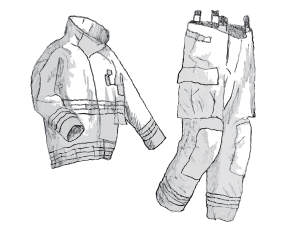 but even after the fire is out, those toxins cling to firefighters’ “turnout gear”—the professional name for their protective clothing. Turnout gear is supposed to be decontaminated regularly in specialized washing machines, but many departments simply can’t afford them. As a result, those toxins don’t go away – they linger in the air when firefighters return to the station every day.
but even after the fire is out, those toxins cling to firefighters’ “turnout gear”—the professional name for their protective clothing. Turnout gear is supposed to be decontaminated regularly in specialized washing machines, but many departments simply can’t afford them. As a result, those toxins don’t go away – they linger in the air when firefighters return to the station every day.
Fighting Back
Captain Maria Silva of Pasco County Florida got the cold shoulder from state legislators, but this didn’t stop her friends and family from lending support. Silva’s sister started a fundraiser and her coworkers lent their time and resources to contribute.
Verdine Day, a female firefighter in Lansing, Michigan, relied on the support of her "babies" — her affectionate term for her male colleagues — when she was diagnosed with breast cancer. Day encountered especially harrowing difficulties because of her gender. Since there are so few women firefighters, few studies have been conducted linking breast cancer to smoke and chemical exposure. This means that even with a law in place, Day would likely not benefit from it.
Despite these setbacks, Day’s loved ones rallied to help. Her entire firehouse arrived at her hospital room — at once. Day’s nurses were amazed and asked her if she was a celebrity to which she replied, overjoyed, 'No, those just my babies, they just love me!”
Larger, independent, entities like the Firefighter Cancer Foundation (FCF) and the Firefighter Cancer Support Network (FCSN) exist to help firefighters. These organizations try to help men and women in uniform by offering informational resources and contacts to other firefighters and action communities around the country. While these organizations are dedicated to their cause, they're no replacement for state support. Firefighters will give almost anything to help each other out, but no fundraiser or network can possibly cover the years of hospital bills and cancer treatments that many victims, not to mention their families, require. Ultimately, this is the situation that modern-day firefighters face: they can do little besides speak up and wait. Jim had only good things to say about his fire department, “they fight and fight and fight. They’re a fantastic department. They fight for us, but the state keeps saying ‘no.’”
As more science comes out, states will be forced to institute safer and more supportive worker’s compensation laws. Even without lab experiments, common sense says that toxic smoke and exhaust fumes can kill. 34 states have passed cancer presumption legislation and there are outcries for this same kind of protection in the other 16. Until that day comes, the men and women who risk their lives to keep our cities and towns safe will have to lean on each other for support. Thankfully, this kind of behavior runs in the blood of fire departments nationwide. As Jim put it, “we consider every firefighter a brother. We are all a family and we will do whatever it takes to help.”
SOURCES:
- http://www.cdc.gov/niosh/updates/upd-10-17-13.html
- http://www.cdc.gov/niosh/firefighters/pdfs/Daniels-et-al-(2015).pdf
- http://www.theatlantic.com/health/archive/2015/09/our-toxic-homes/404722/
- http://www.asbestosdiseaseawareness.org/about_asbestos/asbestos_prevention.html
- http://www.businessinsurance.com/apps/pbcs.dll/article?AID=9999100025059
- http://www1.salary.com/Fire-Fighter-Salary.html
